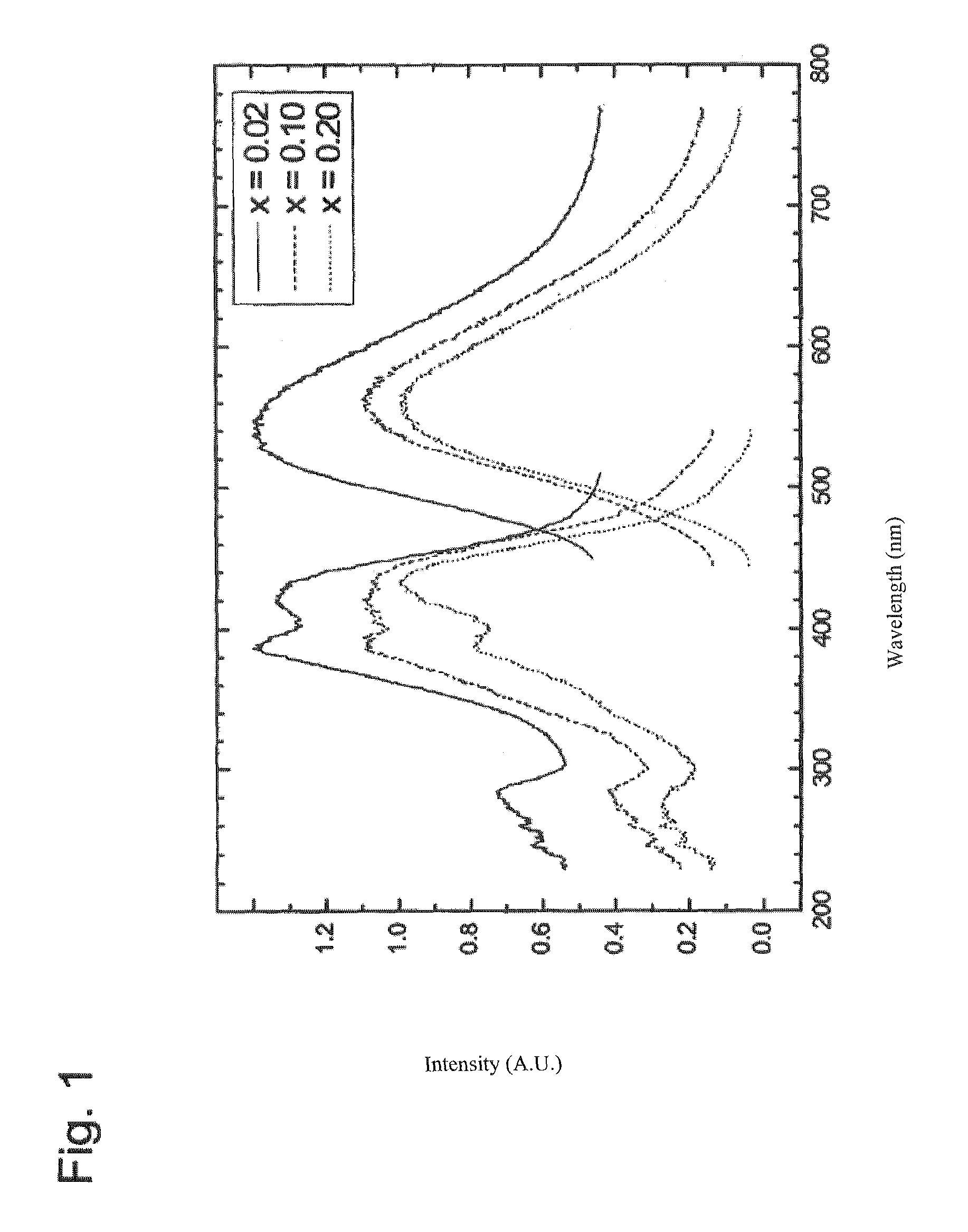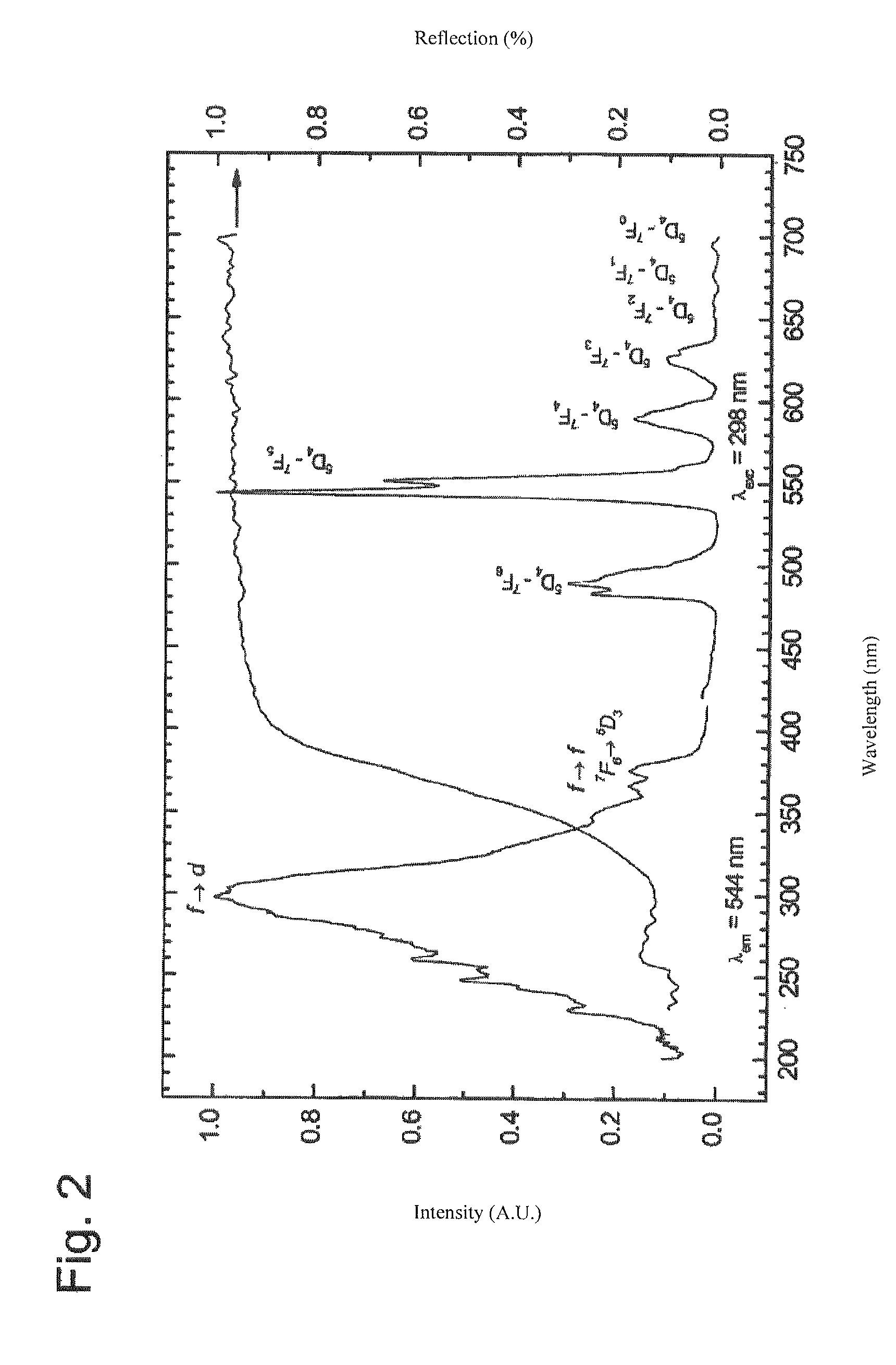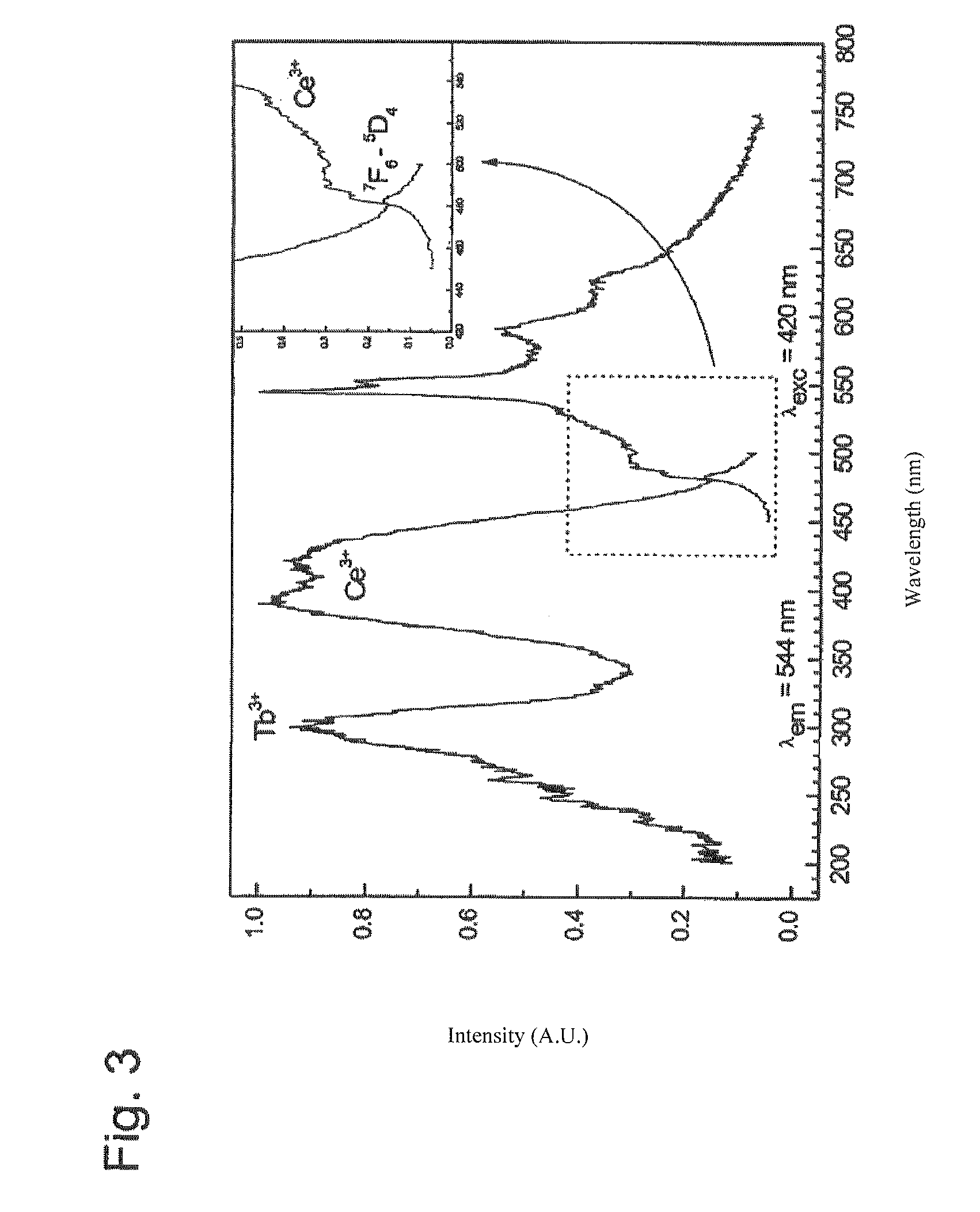Carbidonitridosilicate luminescent substance
a luminescent substance and carbidonitridosilicate technology, applied in the direction of discharge tube luminescent screens, energy-saving lighting, sustainable buildings, etc., can solve the problems of their luminescence efficiency usually declining very quickly, and achieve low thermal luminescence extinction, low half-value width, and high quantum efficiency
- Summary
- Abstract
- Description
- Claims
- Application Information
AI Technical Summary
Benefits of technology
Problems solved by technology
Method used
Image
Examples
example 1
[0033]For preparation of the terbium- and cerium-activated carbidonitridosilicates Y1.00Si4N6C:Tb0.99Ce0.01, terbium metal is first nitrated for 12 hours at 1200° C. in a horizontal tubular oven under a pure nitrogen atmosphere to yield TbNx (x≈0.99).
[0034]The starting materials 34.24 g TbNx, 17.78 g yttrium metal, 0.28 g cerium metal, 28.06 g α-Si3N4 and 8.02 g SiC are then mixed thoroughly in an agate mortar under a dry nitrogen atmosphere and then placed in a molybdenum crucible. This powder mixture is then calcined for 10 hours at 1600° C. under pure nitrogen and next cooled to room temperature in the oven. After removing soluble components and those that have not reacted, there remains a green-emitting luminescent substance having the composition Y1.00Si4N6C:Tb0.99Ce0.01.
example 2
[0035]To produce a carbidonitridosilicate activated with 5% europium and having the composition Gd1.8Sr0.2Si4N6.2C0.8, pure strontium metal and europium metal are nitrated to the precursors Sr3N2 and EuN at 850° C. for two hours under a pure nitrogen atmosphere in a horizontal tubular oven. Then 56.61 g gadolinium metal, 2.91 g Sr3N2, 1.66 g EuN, 29.93 g α-Si3N4 and 6.42 g SiC are mixed thoroughly in a dried nitrogen atmosphere and placed in a thermally resistant crucible. The mixture is calcined for 24 hours at 1750° C. in a nitrogen-hydrogen atmosphere (90:10). After suitable sample workout, a substance with an efficient red luminescence is obtained.
[0036]The accompanying figures are mostly self-explanatory for those skilled in the art of luminescent substances. The basic information has already been presented above. As supplementary information, only a few particulars are given below.
[0037]FIG. 1 shows that Y2Si4N6C luminescent substances doped only with cerium ions will luminesc...
PUM
| Property | Measurement | Unit |
|---|---|---|
| Substance count | aaaaa | aaaaa |
| Substance count | aaaaa | aaaaa |
| Wavelength | aaaaa | aaaaa |
Abstract
Description
Claims
Application Information
 Login to View More
Login to View More - R&D
- Intellectual Property
- Life Sciences
- Materials
- Tech Scout
- Unparalleled Data Quality
- Higher Quality Content
- 60% Fewer Hallucinations
Browse by: Latest US Patents, China's latest patents, Technical Efficacy Thesaurus, Application Domain, Technology Topic, Popular Technical Reports.
© 2025 PatSnap. All rights reserved.Legal|Privacy policy|Modern Slavery Act Transparency Statement|Sitemap|About US| Contact US: help@patsnap.com



